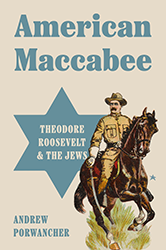Location! Location! Location! Where one lives has a dramatic effect on one’s life chances for many generations, according to sociologists Emily Rosenbaum and Samantha Friedman, authors of The Housing Divide: How Generations of Immigrants Fare in New York’s Housing Market. Ethnicity and race play a crucial role in determining where immigrants live and this in turn determines the schools their children attend, the quality of the housing and the nature of the resources in their neighborhoods and ultimately their future success. Immigrants of African ancestry, including black Hispanics, tend to reside in the most deteriorating neighborhoods with the least resources because of persistent racial discrimination. White immigrants fare very differently. They are often welcomed in middle class communities. The authors cite the case of the Soviet Jews who started arriving in the 1970’s and whose numbers “mushroomed” to 13,260 in 1990 – 94 and to over 20,000 in 1995 – 96, thereby becoming the largest single immigrant group arriving in New York City in that year. As whites, Soviet Jews were welcomed in many communities and had other advantages. They were identified as “refugees” and as such qualified for federal assistance. In addition, established Jewish agencies helped them by providing services to them and “steering” them into aging Eastern European Jewish neighborhoods such Brighton Beach, Rego Park, and Midwood where the housing stock was in fairly good condition. This “effectively helped to reinforce patterns of racial segregation in the city,” the authors report.
The authors appear to emphasize the negative consequences of the “steering” of Soviet Jews. However, the actions of the Jewish agencies seem quite appropriate. The mission of these agencies is to help needy Jews. Fostering the settlement of these new immigrants into supportive Jewish ethnic enclaves is an important mechanism to facilitate their adjustment. In fairness to the book, this is not a major concern of the authors. The major concern of the book is providing an analysis of immigrant housing patterns and providing strategies “to eliminate the inequalities that differentially expose certain groups to restricted opportunities for social and economic advancement.”
For the average reader, this book will be difficult reading but it will be fascinating for policy makers and scholars concerned with housing patterns and racial discrimination.
Emily Rosenbaum is professor of sociology at Fordham University. Samantha Friedman is assistant professor of sociology at Northeastern University. Appendices, bibliography, index, notes.





